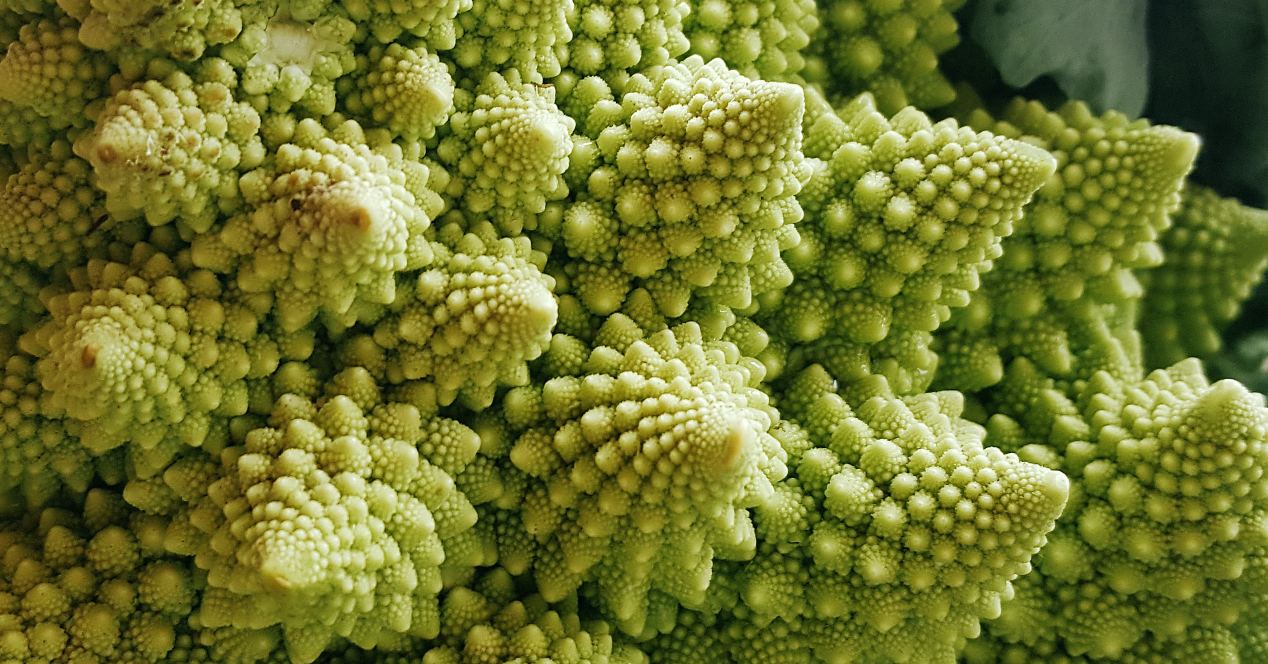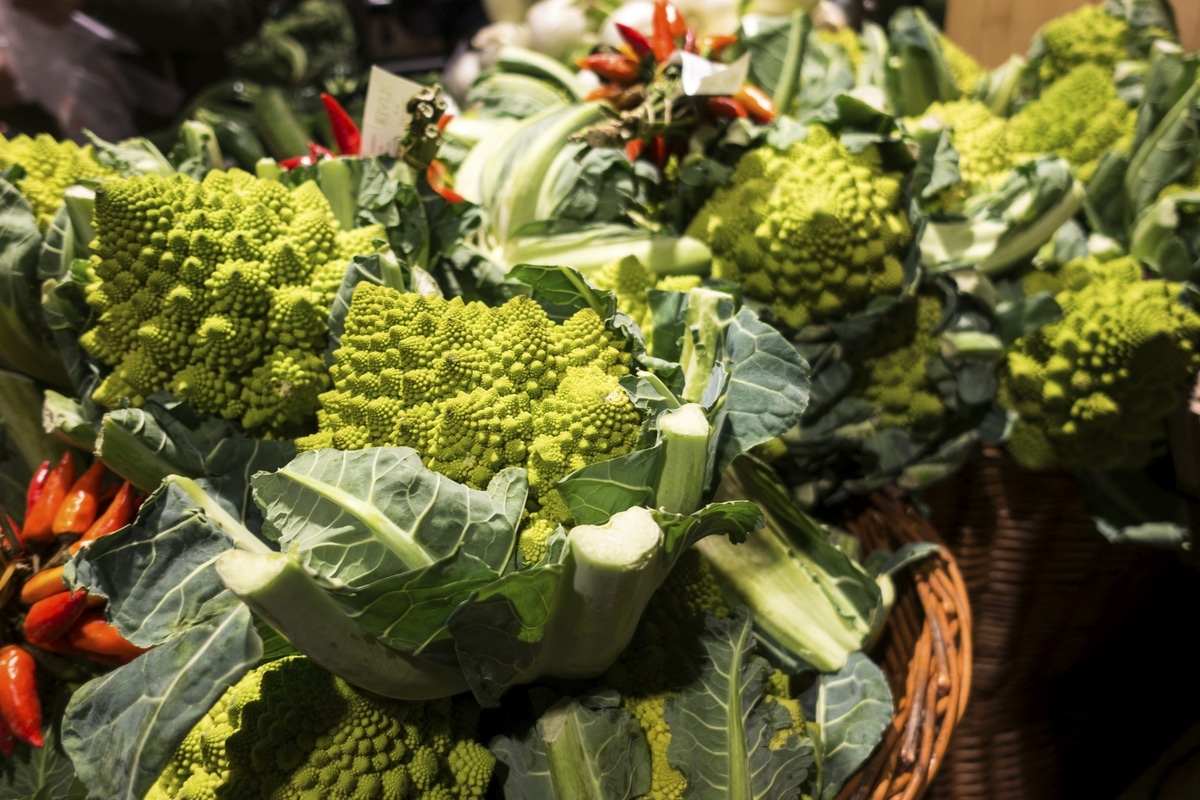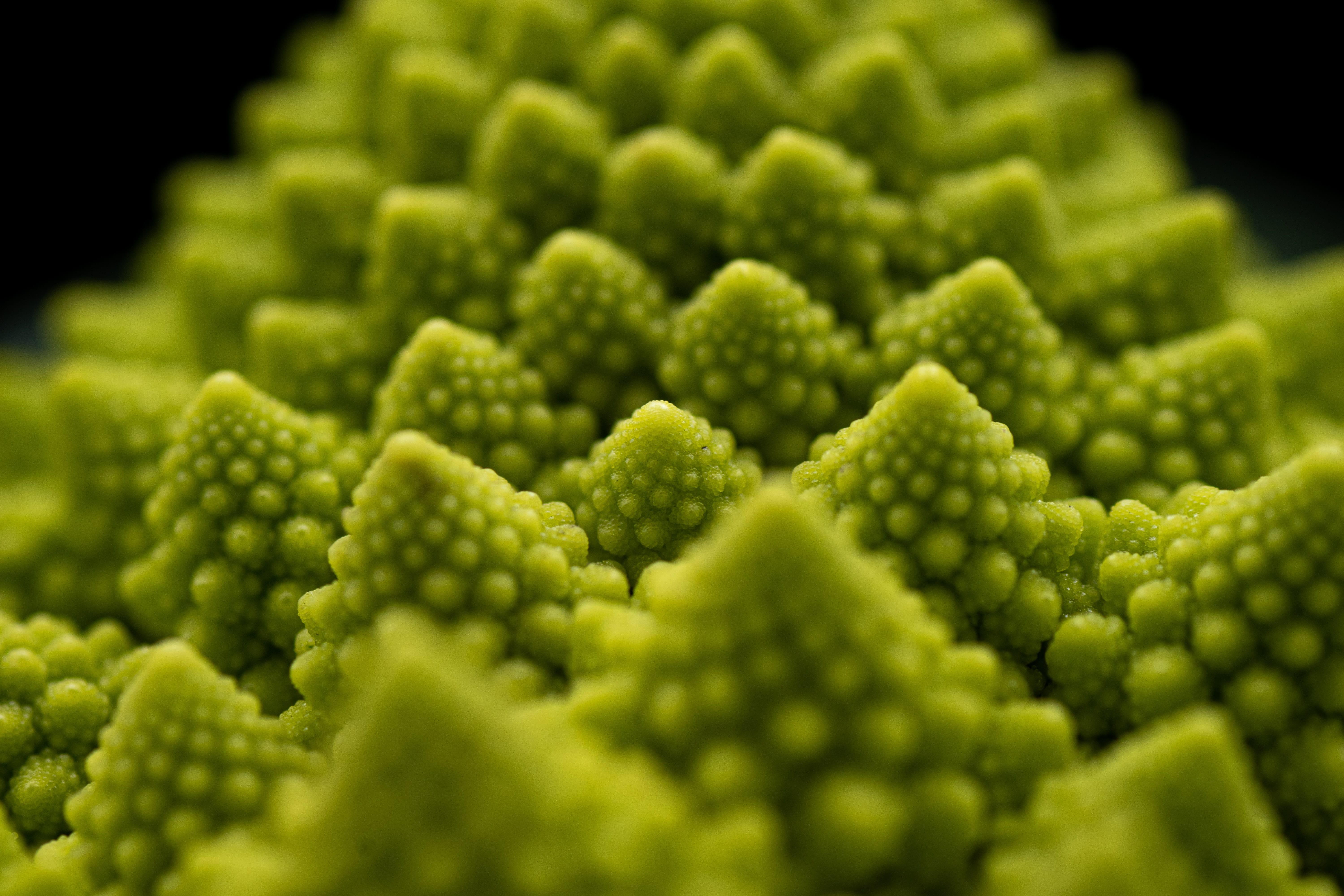
Romanesco is an unusual vegetable, very striking and delicious. Many people say that it is the most similar vegetable to broccoli, not only because of its flavor, but also because of its properties.
What is Romanesque?
Romanesco, also called Roman cauliflower, comes from northern Italy and has an eye-catching bright lime green color. This cool-season vegetable is in season from spring through fall and is part of the Brassica family of vegetables (think cauliflower, kale, broccoli, and cabbage), but it has its own distinctive shape and sweet flavor. to dried fruit This beautiful vegetable is a cauliflower and broccoli hybrid.
Romanesco has tight florets that are grouped together in the shape of spiky whorls instead of rounded like broccoli and cauliflower. Romanesco's unique look is inspired by mathematics: a logarithmic shape called a fractal (in math jargon, infinitely repeating patterns of smaller shapes that create one large shape). In the case of Romanesque, each spiked foil is made up of many smaller dots, creating a fascinating kaleidoscopic design.
Regarding nutritional values, for every 100 grams of Romanesco we find:
- Energy: 38 calories
- Carbohydrates: 4.8 grams
- Fiber: 1.8 grams
- Sugar: 2.5 grams
- Protein: 3.6 grams
- Fat: 0.9 grams

Advantages
Romanesco is a delicious and strange looking vegetable that we have probably never tried before. However, it is interesting to introduce it into the usual diet.
Improves circulation
Romanesco contains large amounts of dietary fiber and antioxidants. These nutrients contribute significantly to reducing the risk of cancer, but not only that. They prevent free radicals, protect the body against infections and many diseases.
An optimal production of red blood cells is essential for our cardiovascular health, and Romanesco contains good amounts of iron, which is essential for this process. Iron encourages the production of red blood cells in the body, which in turn promotes circulation and improves cardiovascular health.
The omega-3 fatty acids contained in this vegetable also improve heart health, in addition to optimizing blood pressure, blood sugar levels, and cholesterol levels. The greater the number of red blood cells there are, the more oxygenated blood and nutrients can be carried in them and delivered to all sections of the body. With this effect comes better circulation of oxygen and nutrients to the brain, which improves brain function.
Improves mental health
The bioactive compounds in this vegetable are also known to promote brain health and prevent mental decline. Since Romanesco is part of the cruciferous vegetable family, it is not surprising that it has glucosinolates, which are sulfur and nitrogen compounds that naturally detoxify the kidney.
It is also rich in folic acid, which is known to help gradually increase the production of red blood cells. This helps fight anemia and also improves reproductive health. It improves brain function.
Reduces the occurrence of cancer
It could be said that this is the most talked about Romanesque benefit. The ability to provide a significant reduction of cancer cells in the body is a vital quality. It can help slow tumor growth and mitigate the development of breast, colon, lung, and bladder cancer.
Consistent and significant consumption of vegetables, especially from the cruciferous family, helps to mitigate the overall growth of cancer cells in the body. The diet should be supplemented with romanesco and other cruciferous vegetables such as kale, cabbage, watercress, and broccoli sprouts. These cruciferous vegetables contain a plant compound called sulforaphane possesses characteristics to fight cancer.
Improves eyesight
Romanesco is enriched with vitamin A, essential for the proper functioning of our eyes. The significant amount of vitamin A improves vision, fights eye problems and ensures the prevention of macular degeneration associated with old age.
The antioxidant content in this plant helps support the reduction of sugar in the body. Science has shown that this vegetable reduces insulin resistance and helps to better control blood sugar. Romanesco is also a notable source of fiber. It contains dietary fiber, which is very powerful in improving blood sugar levels and reducing the chance of developing diabetes.
Strengthens the immune system
With this hybrid vegetable's arsenal of antioxidants like carotenoids, zeaxanthin, vitamin C, beta-carotene, and lutein, it can fight free radical cells and other harmful toxins in the body, thereby boosting the capabilities of the immune system.
Broccoli also contains minerals and vitamins like magnesium, potassium, phosphorus, vitamin A, B, and K along with omega-3 fatty acids that support immune function. These nutrients not only help the immune system but also the reproductive system. This vegetable is known to possess glucosinolates and thiocyanates which are known to help the immune system avoid potentially toxic and harmful substances in the body, especially the liver.
With this vegetable that contains good amounts of vitamin C, the ultimate weapon of the immune system, the body is sure to optimally fight diseases and illnesses in the body.
Improves digestion
This is another important benefit of romanesco. This vegetable is full of dietary fibers that contribute to digestive health and help remove unwanted substances from our bodies.
The presence of this dietary fiber in the vegetable helps to optimize blood cholesterol levels and improve overall health. The fiber of this vegetable has two great contributions; First of all, it can ensure a healthy digestion process because fiber helps a gradual digestion of food at the same time prevents constipation and provides a complete sensation of satiety.
Second, it can help prevent weight gain and also help balance the body's cholesterol level. Also, when it comes to detoxification, the fiber combined with the antioxidants that are present in this vegetable can help the body to achieve a complete detoxification process; this is because romanesco contains specific phytonutrients that are necessary for purification of the body. Also, this vegetable can help improve gut health.
Anti-inflammatory
This distinctive vegetable is also anti-inflammatory. Romanesco contains significant portions of Omega-3 fatty acids, which are well known to be good anti-inflammatory agents.
They prevent the release of inflammatory agents that are secreted in response to the presence of harmful toxins in the body to combat them. Along with this benefit, Romanesco also helps people suffering from inflammatory diseases like arthritis due to its sulforaphane content; It does this by restricting the secretion of enzymes that can add to or lead to joint inflammation and infection.

Uses
To choose the right romanesco, we'll look for one that still has crisp-looking leaves. The head of the romanesco should be bright green and feel firm and heavy.
The key to preparing the romanesco is not to pass it. The best way to keep its spectacular shape and avoid turning it into a mush is to roast, fry, or roast it in large chunks. Its firm texture holds up well to high heat, which will also enhance the naturally sweet flavor of Romanesco. Serve quartered roasted romanesco as a side dish, sauté smaller pieces to add to pasta, or blanch the florets and use as crudités to up the wow factor in a vegetable dish.
Normally it can be eaten in the following ways:
- The stems can be eaten like asparagus.
- In Italy it is usually cooked with garlic, olive oil and white wine
- It can be eaten fresh or cooked.
- Romanesco leaves can be eaten both raw and cooked, such as steamed, braised, stewed, fried, sautéed, and roasted.
- The leaves are prepared like any other hearty vegetable like kale, collards, or cabbage and can be substituted in recipes, as the leaves will not wilt once cooked.
- Romanesco leaves can be sautéed with garlic, sesame, soy sauce, and ginger as an easy garnish or simmered with other vegetables to make a vegetable stock.
- They can also be added to basil and olive oil to make pesto.
- Romanesco leaves pair well with bay leaves, oregano, thyme, red pepper flakes, nutmeg, onions, tomatoes, sweet potatoes, cheddar cheese, roast meats, chorizo, bacon, and chicken.